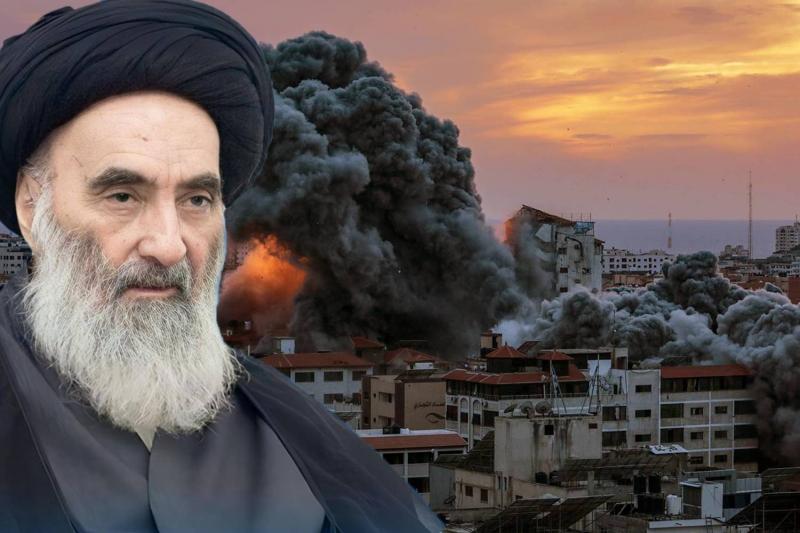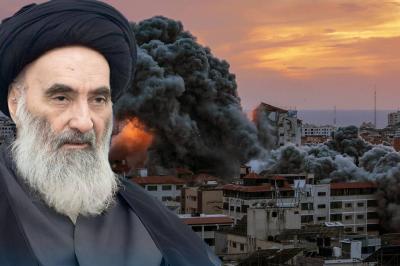The American website "Salon" recalled an Iraqi incident that occurred in Najaf in 2004, in which Shiite cleric Muqtada al-Sadr was involved during armed confrontations with U.S. and Iraqi forces. Ayatollah Ali al-Sistani, the highest Shiite religious authority, intervened to contain the situation, emphasizing the crucial role that religious leaders from various faiths can play in achieving peace worldwide, particularly in the ongoing Gaza conflict. Regarding the war that erupted on October 7 between Israel and Hamas, the American report stated that global public opinion is divided between those who view Hamas's attack as an "unjustifiable act of terrorism" and those who see it as a natural response to decades of mistreatment of Palestinians by Israel, noting that atrocities have been committed by all parties involved.
The report suggested that this conflict can be viewed as another link in a decades-long cycle of regional violence, with Israel's declared goal being the eradication of Hamas, a mission likely unattainable, as Hamas leaders call for the total annihilation of Israel. It highlighted the lack of a clear common ground between the two parties, making any discussion of a two-state solution through negotiations seem entirely unrealistic. Writer Adam Schatz stated in the "London Review of Books" that "the unavoidable truth is that Israel cannot eliminate Palestinian resistance through violence, just as Palestinians cannot win a liberation war in the style of Algeria."
The report called for thinking about something entirely new between Arabs and Jews through an extraordinary peace initiative, reminding readers of events in Iraq, particularly a specific battle, as a demonstration of how to resolve significant risks through creative peaceful means.
On August 5, 2004, after months of clashes with Iraqi forces and U.S.-led forces, al-Sadr's militia launched an attack at 2 a.m. on a police station in the holy city of Najaf, leading to a battle for control of the city. The report pointed out that Muqtada al-Sadr, son of Ayatollah Muhammad Sadiq al-Sadr (who was assassinated under Saddam Hussein's regime), fought battles using his militia known as the "Mahdi Army" in an attempt to expel U.S. forces and undermine the interim Iraqi government.
Following the attack on the police station, reinforcements were called in, including two battalions of U.S. troops and four battalions of the Iraqi army to support the Marines already present in Najaf. Clashes primarily took place inside and around the Wadi al-Salam cemetery, one of the largest cemeteries in the world, dangerously close to the shrine of Imam Ali, revered particularly by Shiite Muslims.
The report recounted information from a Christian chaplain serving as a U.S. soldier who fought in Najaf, who described the battle conditions as "nightmares," detailing how Mahdi Army fighters emerged from small house-sized graves while exchanging gunfire with U.S. soldiers and Marines trying to avoid explosive traps set among the graves, and how he experienced praying with soldiers while holding the hand of a dying soldier, praying for him before he took his last breath.
According to the report, the stakes were exceptionally high for both sides. For al-Sadr, defeating U.S.-led forces would bolster his powerful image and political influence. In contrast, victory for the U.S. and the Iraqi government at the time would mean eliminating the threat posed by al-Sadr and his militias while demonstrating that the interim government, supported by U.S. firepower, could maintain peace and security in post-Saddam Iraq.
The report noted that al-Sadr and his followers had established a base in the shrine of Imam Ali, creating a serious problem for both the government and U.S. forces, explaining that eliminating al-Sadr would require storming the shrine, which itself would be an act of desecration, potentially causing significant damage to the shrine and endangering civilians in the city.
By August 26, U.S. and Iraqi forces had advanced to within 100 meters of the Imam Ali shrine, but only Iraqi soldiers were authorized to enter the shrine, preparing for a final assault to expel al-Sadr and his 500 fighters from their stronghold. Prior to the commencement of the final assault on the shrine, an unexpected development occurred: Ayatollah al-Sistani, described in the report as the spiritual leader and unifier of Shiite Muslims in Iraq and beyond, entered the scene and rapidly mediated the conflict.
The report noted that al-Sistani had returned to Iraq after receiving treatment for a heart condition in England, arriving in Najaf in a convoy of thirty cars, with many supporters following him. It added that al-Sistani leveraged his religious and political influence to successfully negotiate a ceasefire that mandated the withdrawal of U.S. forces from the mosque while allowing al-Sadr and his remaining forces to lay down their arms and withdraw from the city, thus securing the safety of the shrine and civilians in Najaf.
Describing al-Sistani's move as "surprising and effective," the report pointed out that such major initiatives are not unique in history, referencing many examples of nonviolent actions and resistance that have changed the course of human events.




